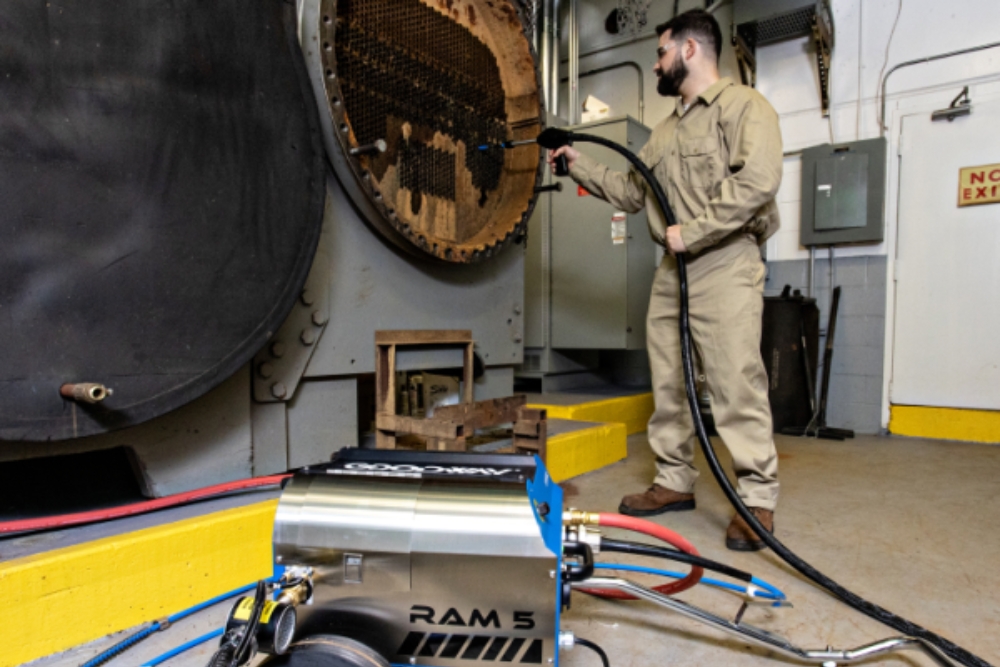Get Ahead of Spring by Preparing Your Facility’s Chiller System Now
As facilities managers begin planning seasonal maintenance for chiller systems in preparation for spring, Goodway Technologies, a provider of heat exchanger cleaning and maintenance equipment, emphasizes the importance of conducting routine maintenance and cleaning procedures to ensure optimal performance.

Regular chiller tube cleaning and maintenance not only increases operating efficiency, but also reduces energy costs, decreases downtime, and improves the overall performance of the chiller system.
The U.S. Department of Energy highlights that chillers can be significant energy consumers in facilities, making proper maintenance and cleaning essential for efficient operation. According to the department, neglecting routine maintenance can lead to increased expenses as chillers need to work harder to achieve the desired output.
To prepare your chiller system for spring, consider following these five steps to optimize performance:
Step 1: Maintain a Daily Operating Log
The Federal Energy Management Program (FEMP) recommends updating the chiller’s operating log at least four times daily to monitor critical parameters. This helps identify any potential issues or concerns. At a minimum, the log should be updated once a day, recording data such as head pressures and approach temperatures. Many newer chillers have software that automatically maintains daily log data, simplifying this task.
Step 2: Keep Tubes Clean
Even minor scale or sludge buildup can significantly impact chiller efficiency, leading to increased energy expenses. It is recommended to clean chiller tubes at least once a year. Regular monitoring throughout the year can help identify the need for additional cleaning. For more information on determining which chiller cleaning method best fits your need, read Goodway’s guide here.
Step 3: Check for Leaks
Regularly inspect the chiller unit for potential leaks, as they can affect both system efficiency and operation. Leaks can also result in hazardous refrigerants escaping into the surrounding air, posing safety concerns for occupants. Refrigerant levels can be monitored by using an air-purge time, checking the refrigerant sight-glass, and employing a gas analyzer to assess joints and connections. Prompt action should be taken if refrigerant leaks are suspected.
Step 4: Maintain Proper Water Treatment
In addition to cleanings, implementing a water treatment program is sometimes helpful for reducing contaminants on heat-transfer surfaces and inhibiting bacterial growth. However, in most cases, water treatment alone may not address issues like heavy calcium-scale buildup. Goodway Technologies has a team of experts who can identify specific scales and recommend appropriate solutions.
Step 5: Maintain the System
The final step is implementing an upkeep plan to stay on task with the chiller maintenance program. All facility management employees working on the system should be updated on the process and receive the proper training. Regularly provide updates on the impact of the routine maintenance and track the benefits to share with leadership.
Remember Cooling Towers
For facilities equipped with cooling towers, it is crucial to include it in the routine maintenance plan. If cooling towers are not rejecting heat properly, they can impact other parts of your HVAC systems, including chillers. If you have performed chiller maintenance and not seen the results you have expected, check your cooling towers. Buildup in cooling towers not only leads to increased expenses and reduced efficiency, but also creates potential health risks. Scaling and fouling in cooling towers provide an ideal breeding ground for harmful bacteria, including Legionella. For more information on how cooling tower maintenance can impact chillers, Goodway offers some tips and tricks here.
The post Get Ahead of Spring by Preparing Your Facility’s Chiller System Now appeared first on Facilities Management Advisor.

